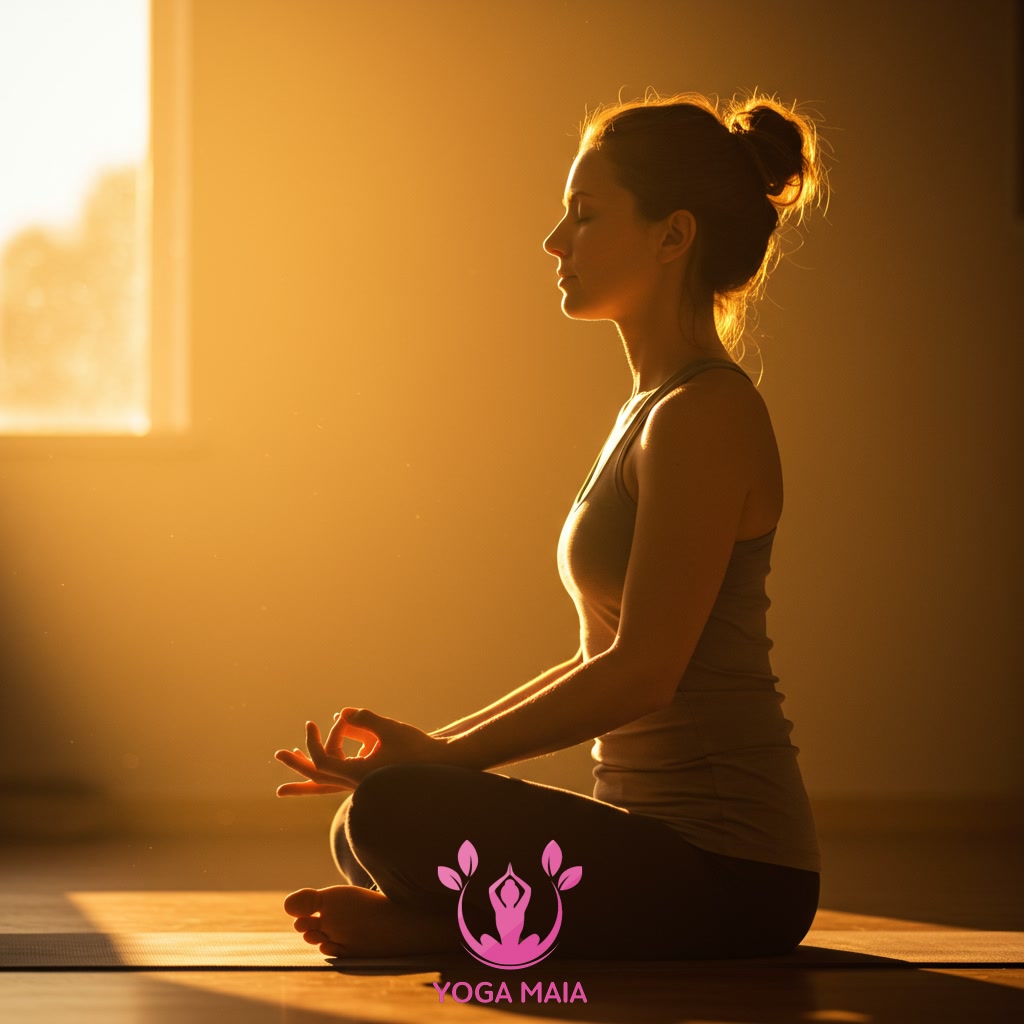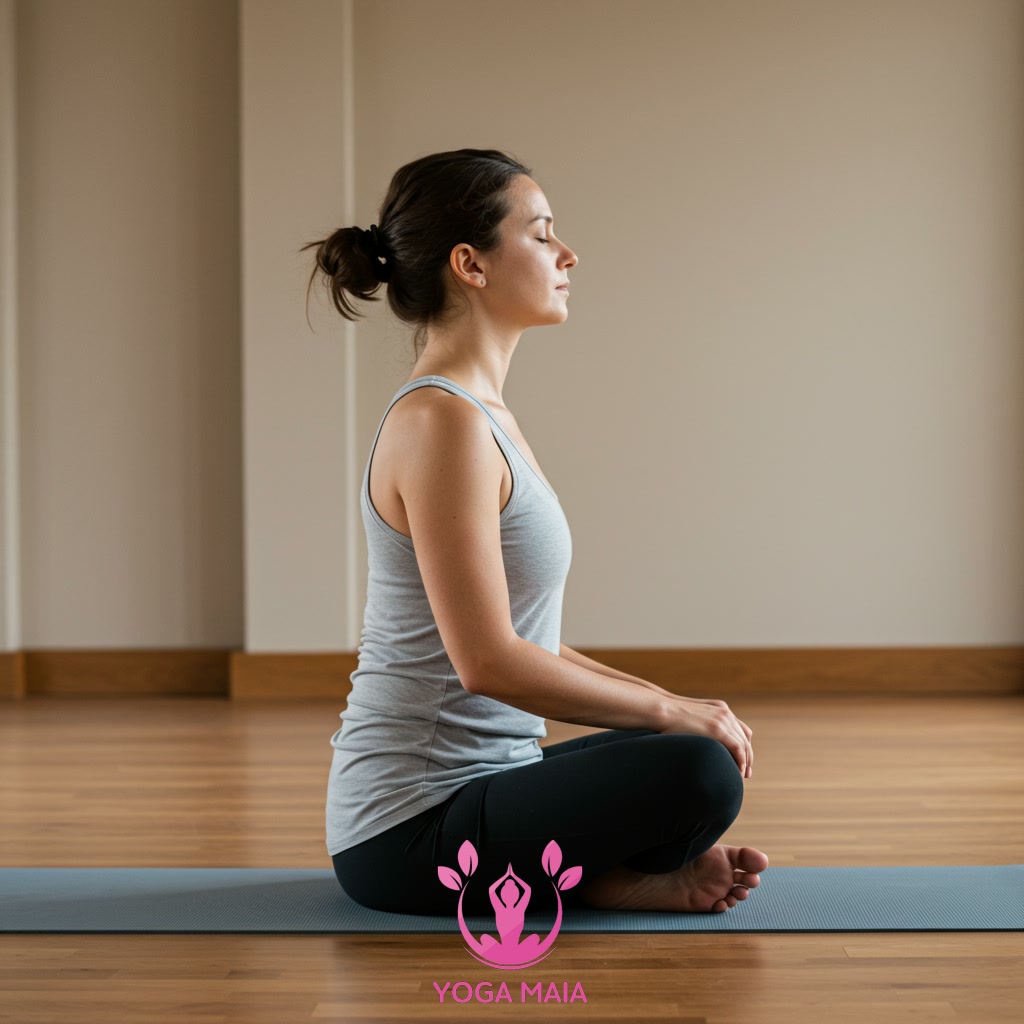Yoga Blog
Energizing Breath of Fire: A Powerful Yoga Pranayama Technique for Vitality

Energizing Breath of Fire is a dynamic yoga pranayama technique. This powerful breathing practice is specifically designed to enhance vitality and energy levels. It involves rapid, equal inhales and exhales through the nose. Mastery of this technique can be a significant part of a dedicated yoga practice, promoting internal heat and purification.
Table of Contents
- Section 1: Introduction to Breath of Fire (Kapalabhati Pranayama)
- Section 2: Understanding the Technique: How Breath of Fire Works
- Section 3: Step-by-Step Guide to Practicing Breath of Fire
- Section 4: Key Benefits for Vitality, Energy, and Focus
- Section 5: Important Precautions and Modifications
- Section 6: Tips for Integrating Breath of Fire into Your Yoga Practice
Section 1: Introduction to Breath of Fire (Kapalabhati Pranayama)
Welcome to the introduction of Breath of Fire, also known in Sanskrit as Kapalabhati Pranayama. This dynamic breathing technique is a fundamental practice within many yoga traditions, particularly Kundalini Yoga. Kapalabhati translates literally to ‘skull shining,’ referencing the clarity and invigoration this powerful breath brings to the mind and head region. Unlike typical relaxed breathing, Breath of Fire is characterized by short, forceful exhalations driven by the lower abdomen, followed by passive, spontaneous inhalations. It is performed rapidly and continuously for a set duration. This introductory section will lay the groundwork for understanding what this technique is, distinguishing it from other forms of pranayama, and highlighting its primary purpose as an energizing and cleansing practice.
 Introduction to Breath of Fire (Kapalabhati Pranayama)
Introduction to Breath of Fire (Kapalabhati Pranayama)
Section 2: Understanding the Technique: How Breath of Fire Works
Following the introduction, understanding how Breath of Fire functions is key. This technique relies on rapid, equal breaths primarily driven by the diaphragm. The exhale is short, powerful, and active, initiated by quickly drawing the naval towards the spine. The inhale, conversely, is passive and happens automatically as the diaphragm relaxes. This creates a rhythmic, pumping action in the abdomen and chest. Air is expelled and drawn quickly through the nose with equal force and duration for both inhale and exhale. This dynamic movement generates internal heat, stimulating circulation and purifying the system, hence its name “Breath of Fire.”
 Understanding the Technique: How Breath of Fire Works
Understanding the Technique: How Breath of Fire Works
Section 3: Step-by-Step Guide to Practicing Breath of Fire
Begin your practice of Breath of Fire by finding a comfortable seated position, such as Sukhasana (Easy Pose) or Padmasana (Lotus Pose), ensuring your spine is straight but relaxed. Place your hands gently on your knees, palms down or up according to your preference or the specific practice context. Close your eyes or soften your gaze downwards. Start by taking a few normal, deep breaths to settle. Then, initiate rapid, equal inhales and exhales through the nose. The key is a forceful, short exhale driven by the diaphragm, which actively pulls the abdomen inward. The inhale is passive and happens automatically as the diaphragm relaxes, allowing the abdomen to expand slightly. Maintain a steady, pumping rhythm, aiming for approximately one breath cycle (inhale and exhale) every half-second. Keep your shoulders and chest relaxed throughout, focusing the movement in the navel area. Start with short durations like 30 seconds and gradually build up as you become comfortable.
 Step-by-Step Guide to Practicing Breath of Fire
Step-by-Step Guide to Practicing Breath of Fire
Section 4: Key Benefits for Vitality, Energy, and Focus
Practicing Breath of Fire offers significant benefits for enhancing vitality, boosting energy levels, and sharpening mental focus. This dynamic pranayama technique rapidly increases oxygen supply to the brain and body, which can awaken the nervous system and combat feelings of sluggishness. The quick, forceful exhalations help to expel stale air and toxins, promoting a sense of internal cleansing and rejuvenation. Regular practice stimulates metabolic activity, generating internal heat and fostering physical vigor. Beyond the physical effects, the rhythmic nature of the breath demands concentration, drawing your awareness inward and helping to quiet the mind, thus improving clarity and the ability to focus on tasks. Incorporating Breath of Fire into your routine can leave you feeling more alert, centered, and ready to face the day with renewed energy.
 Key Benefits for Vitality, Energy, and Focus
Key Benefits for Vitality, Energy, and Focus
Section 5: Important Precautions and Modifications
While Breath of Fire is a powerful technique, it is crucial to be aware of important precautions and modifications to ensure safe practice. Individuals who are pregnant, have high blood pressure, heart conditions, epilepsy, or have recently undergone abdominal surgery should avoid this pranayama. It is also generally advised to avoid practicing Breath of Fire during menstruation. Always practice on an empty stomach. Beginners should start slowly with shorter durations (perhaps 15-30 seconds) and gradually increase as comfort and capacity grow. If you experience dizziness, lightheadedness, or discomfort, immediately stop the practice. Listening intently to your body is paramount. Modifications might include practicing at a slower pace or reducing the intensity of the breath. Prioritizing safety allows you to reap the benefits without undue strain.
 Important Precautions and Modifications
Important Precautions and Modifications
Section 6: Tips for Integrating Breath of Fire into Your Yoga Practice
Successfully integrating Breath of Fire into your regular yoga practice requires thoughtful consideration. Start by incorporating short bursts of the technique, perhaps just 10-20 rounds, into your warm-up or before more active asanas where you need increased energy. Find a comfortable seated position, ensuring your spine is tall and relaxed. As you become more familiar and comfortable with the rapid rhythmic breathing, you can gradually increase the duration or number of rounds. Pay close attention to your body’s response; if you feel dizzy or lightheaded, slow down or pause. Consistency is key; even short, regular practice sessions will help build stamina and proficiency, allowing you to harness the vitalizing power of Breath of Fire within your flow.
 Tips for Integrating Breath of Fire into Your Yoga Practice
Tips for Integrating Breath of Fire into Your Yoga Practice












